Expert Guide: Selecting the Ideal Chlorine Tablets for a Brilliant Swim
July 25th, 2024
July 25th, 2024
On a sweltering summer afternoon, the shimmering allure of a backyard pool becomes irresistible, promising both relaxation and refreshment. Yet, the crystal-clear water we often take for granted is the result of diligent maintenance, with chlorine tablets playing a crucial role. These small yet mighty tablets ensure the water remains free of harmful bacteria, providing peace of mind alongside enjoyment.
My own journey with pool care began when my family moved into a house with a neglected, leaf-strewn pool. Faced with the daunting task of restoration, I quickly learned the importance of choosing the right chlorine tablets. The market offers a dizzying array of options, each promising superior results, but not all tablets are created equal. Some dissolve too quickly, leaving water unbalanced, while others might not be compatible with specific pool systems.
In your quest for the best chlorine tablets, it's essential to consider several factors: tablet size, dissolution rate, and added ingredients like stabilizers. Moreover, understanding how to properly add them to your pool is equally vital. Incorrect usage can lead to inefficient sanitation or even damage to your pool equipment.
As we embark on this exploration, think of it not just as a guide, but as a conversation about the nuances of pool care. It's about transforming what might seem like a chore into an art—one that rewards with every pristine, sunlit splash.
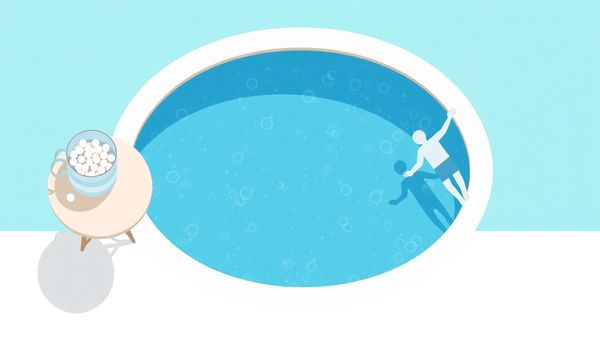
Navigating the labyrinth of pool sanitation can sometimes feel like finding the right pair of shoes—comfort and practicality must align. When selecting chlorine tablets for your pool, size matters significantly. Larger pools, those stretching beyond the 5,000-gallon mark, naturally gravitate towards the 3-inch tablets. These hefty pucks offer a slow-dissolving chlorination process, easing maintenance with a steady release of sanitizer suitable for expansive water bodies. Picture them as the marathon runners of pool care, tirelessly keeping your water safe and clear.
Conversely, for smaller pools, such as those cozy above-ground types or any under 5,000 gallons, the 1-inch tablets are your go-to. While you might be tempted to toss a 3-inch puck into the mix, smaller tablets allow for more precise dosing, reducing the risk of over-chlorination—a common misstep that can lead to eye irritation and other unwanted poolside effects. These smaller pucks dissolve quicker, making them ideal for tighter control over chlorine levels.
Another crucial factor is the method of application. Whether through a floating dispenser, skimmer, or an automatic chlorinator, consistency is key. Automatic chlorinators, for instance, integrate directly with the pool’s pump system, ensuring a balanced and efficient distribution. To wrap it up, always consider your pool’s size and equipment compatibility, and regularly test the water to keep that crystal-clear splash zone ready for action.
When you're tasked with choosing the right chlorine tablet for your pool, it's not just a matter of grabbing the first option you see. Each pool has its own personality, and understanding your pool's needs starts with knowing its size. Enter the 3-inch and 1-inch chlorine tablets, each with their own strengths.
For those managing a larger oasis—something over 5,000 gallons—3-inch tablets are your go-to. These hefty pucks dissolve leisurely, providing a consistent level of chlorination without constant supervision. They’re like the dependable friend who always shows up on time. When placed in an automatic chlorinator, they efficiently maintain your pool's clarity with minimal fuss.
Conversely, if your pool is a cozy retreat—think under 5,000 gallons—opting for 1-inch tablets is a savvy choice. These smaller pucks dissolve faster and allow for more precise control over chlorine levels. It’s like having a dial on your stereo, letting you fine-tune the volume to your liking. This flexibility is crucial because over-chlorination in a smaller pool can lead to discomfort for swimmers and potential damage to your pool’s surfaces.
Regardless of the tablet size you select, remember that balance is key. Regular testing of your pool’s water will ensure that pH, alkalinity, and chlorine levels are all in harmony. After all, a well-cared-for pool is not just a body of water; it’s a sanctuary of relaxation.
Understanding what's in your chlorine tablets is like knowing the secret recipe for your pool's well-being. These little pucks pack a punch, combining chlorine and cyanuric acid (CYA) to keep your pool sparkling clean while shielding it from the harsh sun. Opt for 3-inch tablets if your pool is a grand oasis over 5,000 gallons; they dissolve gradually, offering a continuous release of sanitizer. For the petite pools, those under 5,000 gallons, 1-inch tablets are your best bet. They give you more control and lessen the risk of over-chlorination.
Chlorine tablets are convenient; just drop them in a floater, skimmer basket, or an automatic chlorinator, and let them do their magic. But beware! They can play havoc with your pool's pH and alkalinity, potentially leading to skin irritation or damage to pool surfaces. Too much cyanuric acid buildup can also make your chlorine less effective over time.
Different brands may offer similar ingredients, but always check for the quality seal and packaging integrity. Proper storage is key to maintaining their potency. Remember, even with these time-saving wonders, regular testing and maintenance of your pool's chemistry are crucial. Each splash should be as safe as it is refreshing, ensuring your pool is a haven of health and happiness.
Harnessing the full potential of chlorine tablets in your pool requires a thoughtful approach to chlorination methods. Understanding the nuances between different delivery systems can make all the difference. Automatic chlorinators, for instance, are a reliable choice for ensuring a steady release of chlorine. By integrating these directly into your pool's pump and filter setup, they allow for precise control of chlorine levels, which is crucial for maintaining optimal water chemistry. If you've ever found yourself fiddling with floating dispensers under the hot sun, you might appreciate the set-it-and-forget-it convenience of a chlorinator.
On the other hand, floating dispensers offer flexibility, especially for smaller pools or those with less frequent use. They meander across the water’s surface, gradually releasing chlorine as the tablets dissolve. However, their path can be erratic, sometimes leading to uneven chlorination. I remember one summer, finding a bleached patch on a friend’s pool liner where the floater had camped too long. It’s a reminder that while simple, they require occasional nudging to prevent overexposure in one spot.
For those opting to place tablets in the skimmer, be aware of potential drawbacks. The tablets will continue dissolving even when the pump isn’t running, which can lead to concentrated chlorine levels in the skimmer area. Over time, this can cause damage to your pool equipment. Balancing these methods with routine testing and adjustments ensures your pool remains inviting and refreshing all season long.
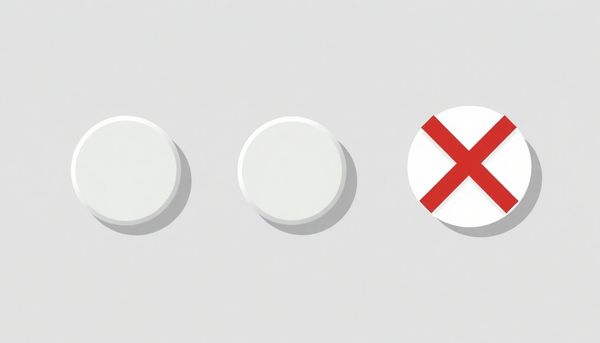
Adding chlorine tablets to your pool might seem straightforward, but there’s a method to the madness. First, consider your pool's size before choosing between the 1-inch or 3-inch tablets. For a large pool over 5,000 gallons, 3-inch tablets are the way to go, providing a slow yet consistent release of chlorine. Smaller pools should stick to 1-inch tablets to avoid the risk of over-chlorination, which occurs when too much chlorine is added to a limited volume of water.
Once you've got the right size, it's time to decide how to introduce those tablets to your pool. The automatic chlorinator is a popular choice among pool owners for its precise control over chlorine distribution. You simply load it up with tablets, set the desired dissolution rate, and let it handle the rest. This device seamlessly integrates with your pool's pump and filter system to ensure that chlorine is dispersed evenly.
Alternatively, floating dispensers offer a low-tech but effective solution. These devices bob along the surface, slowly releasing chlorine. However, they can get trapped in corners or against ladders, leading to uneven chlorine distribution. Keep an eye on them to ensure they’re circulating properly.
Regardless of your method, regular water testing is crucial. It’s the compass guiding you through the chemical jungle of pool maintenance. By balancing your pH, alkalinity, and cyanuric acid levels, you ensure your chlorine remains effective, keeping your pool clean and safe.
Choosing the ideal size of chlorine tablets for your pool isn't just a matter of convenience; it's crucial for maintaining the right chemical balance. In the world of chlorine pucks, size indeed matters, particularly when it comes to your pool's volume and the ease of managing your water chemistry.
For owners of expansive pools exceeding 5,000 gallons, larger 3-inch tablets are your best bet. These hefty pucks dissolve gradually, providing a consistent release of chlorine, which is perfect for substantial bodies of water. They streamline the process, ensuring you don't have to babysit your pool's sanitizer levels daily. Imagine having a vast backyard pool where a single 3-inch tablet does the heavy lifting, maintaining the water's sparkle and purity without constant attention.
Conversely, for those with more modest aquatic retreats—think Intex or smaller above-ground pools under 5,000 gallons—opting for 1-inch tablets offers a more controlled approach. Smaller tablets allow for precise adjustments, preventing the risk of over-chlorination. I once helped a friend with a compact pool, and switching to 1-inch tablets transformed their maintenance routine into a stress-free task, avoiding the potent chlorine punch that comes with larger pucks.
Ultimately, selecting the right tablet size hinges on your pool's capacity and your desire for ease in maintenance. By tailoring your choice to your specific needs, you ensure your pool remains a refreshing, inviting oasis throughout the swimming season.
Navigating the world of pool maintenance often leads to the discovery of automatic chlorinators, a boon for those who find manual dosing a chore. Unlike the floating dispensers that roam the pool's surface like lazy summer clouds, these diligent devices stay grounded in practicality. Tucked into your pool's circulation system, an automatic chlorinator dispenses chlorine at a consistent rate, ensuring your pool remains a welcoming oasis rather than a chemical conundrum.
A friend once shared his success with automatic chlorinators after struggling with fluctuating chlorine levels. He was constantly battling green water until he installed one of these nifty gadgets. The chlorinator brought a balance he hadn't managed with manual methods. By adjusting the control valve, he could customize the chlorine release to match his pool's demands, preventing the dreaded over-chlorination that had once plagued him.
For effective use, keep a few tips in mind. First, remember that your chlorinator only works when the pump is running. Set your pump to cycle during daylight hours when chlorine degradation by UV rays is highest. Also, routinely check the device to ensure it's dispensing properly and that the tablets haven't turned into a stubborn sludge. Testing your pool's water weekly remains crucial, as this device doesn’t absolve you from monitoring pH, alkalinity, and cyanuric acid levels. Balancing these elements alongside chlorine will keep your pool both sparkling and safe.
Balancing pH and alkalinity in your pool is akin to tuning a finely crafted instrument. While chlorine tablets provide an efficient and convenient method for maintaining clarity and sanitation, they can inadvertently disrupt the delicate balance of your pool's water chemistry. Finding that perfect harmony is essential to ensuring a comfortable and safe swimming experience.
When using chlorine pucks, it's crucial to keep a close eye on pH and alkalinity levels. The slow dissolving nature of these tablets means they gradually introduce acidic compounds into the water, leading to potential drops in pH and alkalinity. A low pH can cause skin and eye irritation, not to mention it might start nibbling away at your pool surfaces and equipment with its corrosive tendencies. To prevent this, regularly test the water using reliable kits and, if needed, adjust using pH increasers or baking soda to maintain alkalinity.
Personal experiences often highlight the importance of this balance. My neighbor once neglected their pH levels, resulting in a pool that was as welcoming as a vat of pickle brine. It took them weeks to restore the balance, a lesson in vigilance and prompt action. By ensuring your pool's pH is between 7.4 and 7.6 and alkalinity ranges from 100 to 150 ppm, you can avoid such pitfalls. Consistent monitoring and adjustments can transform your pool into a serene oasis, inviting all to dive in without hesitation.
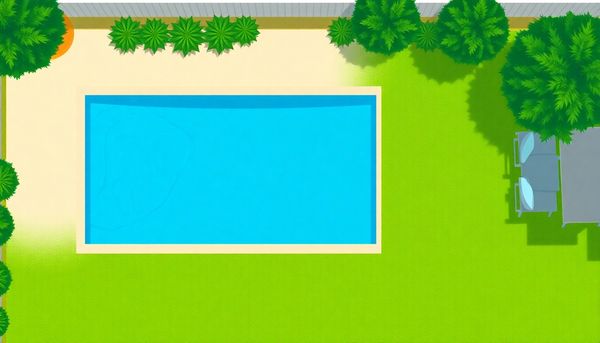
Keeping your pool pristine might seem daunting, but chlorine tablets make it surprisingly straightforward. These tablets are a pool owner's best friend, transforming the maintenance routine into a nearly effortless task. With two sizes available—1-inch and 3-inch pucks—these tablets cater to both small backyard pools and larger swimming havens. It's essential, though, to choose the right size based on your pool's volume to maintain a balanced chemical environment.
For those with expansive swimming areas, 3-inch tablets offer a perfect fit. They dissolve at a measured pace, releasing sanitizer steadily without frequent intervention. However, if your water retreat is on the smaller side, the 1-inch tablets provide more precise dosing, preventing the risk of over-chlorination that can occur with larger tablets in a smaller pool volume.
To maximize the benefits of these tablets, consider investing in an automatic chlorinator. This device works tirelessly, ensuring that your pool water remains consistently sanitized, which is ideal for those who prefer a hands-off approach. By simply placing the tablets in the chlorinator, you can enjoy more swim time and less fuss with chemical imbalances.
Beware, though—relying solely on the convenience of these tablets isn't enough. Regular testing of your pool's water chemistry remains crucial. Ensuring your pH, alkalinity, and cyanuric acid levels are within the recommended ranges not only protects your equipment but also ensures a pleasant swimming experience for everyone.
Selecting the proper tablet size is akin to crafting a recipe – precision matters. For expansive pools exceeding 5,000 gallons, the 3-inch tablets are your best friend. Designed to dissolve gradually, they ensure steady chlorine levels without constant monitoring. These robust pucks, about the size of a coffee mug's base, fit effortlessly into automatic chlorinators. This hands-off approach is particularly appealing to those who prefer less poolside fuss.
Now, let's talk about the compact club – pools under 5,000 gallons. Smaller pools, like those adorable Intex models, benefit from the nimbleness of 1-inch tablets. These petite powerhouses offer more flexibility in dosing, reducing the risk of over-chlorination, which can lead to a chemical imbalance. Imagine using a 3-inch tablet in a petite pool: it’s like wearing shoes two sizes too big – uncomfortable and unnecessary.
Personal stories often illustrate these points vividly. Take my neighbor, who once used 3-inch tablets in her above-ground pool. Her water quickly turned harsh and uninviting. Switching to 1-inch tablets transformed her pool into a much more inviting oasis.
So, as you select your chlorine companion, consider both pool size and personal preference. Remember, the right tablet size is not just about efficiency; it's about creating a swimmable sanctuary where balance reigns supreme.
Crafting the perfect chlorination routine for your pool isn't about simply picking any chlorine tablet off the shelf. It's about understanding how these tablets work in harmony with your pool's unique needs. For those with expansive pools over 5,000 gallons, the 3-inch tablets are your steadfast allies. Their slow-dissolving nature ensures a consistent release of chlorine, minimizing the fuss of frequent checks. However, in smaller pools, these giant tablets can easily tip the balance, leading to over-chlorination.
Now, imagine you're juggling pool pH and cyanuric acid levels—it's a delicate dance. The chlorine tablets, while convenient, can influence these levels, sometimes drastically. Too much cyanuric acid, which is a byproduct of these tablets, can render your chlorine ineffective against bacteria and algae. This is where regular testing becomes crucial; weekly checks with a reliable test kit can save you from murky waters.
Automatic chlorinators are another game-changer. They integrate seamlessly into your pool’s filtration system, meting out chlorine at a steady rate. This not only simplifies maintenance but also reduces the risk of damaging pool equipment due to undissolved tablets. Whether you choose this method or a floating dispenser, remember to adjust according to your pool's size and usage patterns. Balancing these variables ensures that your chlorination method is not just effective but optimal, keeping your pool inviting for every splash and swim.
Keeping your pool water pristine isn’t just about tossing in a few chlorine tablets and calling it a day. Regularly balancing your water chemistry is the unsung hero of a perfect swimming season. Remember my friend Jim, who once found his pool resembling a green swamp due to neglected water testing? It’s a cautionary tale worth heeding.
Testing should become a weekly ritual. Using a reliable test kit or strips, you need to ensure your pool’s pH, alkalinity, and chlorine levels are where they need to be. pH levels should hover between 7.4 and 7.6, while alkalinity should stay between 100 and 150 PPM. These parameters not only keep the water safe but also help maintain the longevity of your pool equipment. Chlorine tablets, while convenient, slowly release stabilizers like cyanuric acid that can accumulate over time. Elevated cyanuric acid can actually reduce chlorine efficacy, leaving you with deceptively clear but unsafe water.
For those using automatic chlorinators or floaters, the temptation to set and forget is real, but be wary. Excessive cyanuric acid buildup from overuse of tablets can be detrimental. Regular water balancing prevents unnecessary eye irritation and keeps that eerie algae at bay. So, each week, before you pull out the sun loungers, take a moment to check your pool’s chemistry. Trust me, the satisfaction of a crystal-clear pool is worth the routine.
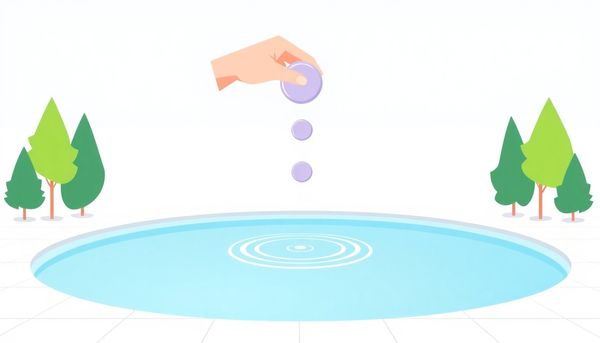
When it comes to choosing the right type of chlorine for your pool, it’s not just about keeping the water clear; it’s about finding a solution that fits your lifestyle and pool needs. Chlorine tablets, with their convenient size and slow-dissolving nature, provide a hands-off approach to pool maintenance. They’re particularly handy when used with automatic chlorinators, offering a steady release of sanitizer. However, they do carry a caveat: over time, they can affect your pool's pH balance and increase cyanuric acid levels, potentially reducing chlorine effectiveness.
Granular chlorine, on the other hand, offers more immediate control. If you're a pool owner who prefers to tackle algae and bacteria directly, granules allow you to adjust dosages with precision. Yet, handling and measuring can be cumbersome and more labor-intensive compared to simply dropping a puck into a floater.
Liquid chlorine or bleach provides another option, often more cost-effective initially. However, it lacks a stabilizer, making it more susceptible to sun degradation. Its high pH can also impact water chemistry, requiring careful balancing with other chemicals.
Personally, I've found tablets to be a lifesaver for weekend getaways, ensuring my pool remains crystal clear with minimal fuss. But for those who enjoy tinkering with their pool chemistry, or have unique water challenges, the adaptability of granules or liquid chlorine may be more appealing. The key is understanding your pool’s needs and aligning them with the benefits and downsides of each chlorine type.
Understanding the size of chlorine tablets is crucial for maintaining the chemical balance in your pool. These tablets generally come in two sizes: 1-inch and 3-inch. Each size has its specific advantages and is suited for different pool environments. For those with a sizable backyard oasis, 3-inch tablets are a popular choice. They dissolve slowly and can effectively sanitize up to 5,000 gallons of water per tablet, making them ideal for pools that hold more than 5,000 gallons. This option minimizes the need for frequent dosing and is compatible with automatic chlorinators, ensuring consistent chlorine levels with minimal effort.
On the other hand, if your pool is more modest in size, perhaps an above-ground model or a smaller inground pool, 1-inch tablets might be more appropriate. These smaller tablets allow for better control over the chlorine levels in pools with less than 5,000 gallons of water, reducing the risk of over-chlorination. Using multiple 1-inch tablets can help you fine-tune the dosage, particularly in pools where precise chemical balance is essential.
Choosing the right size tablet not only helps in maintaining a clear and safe swimming environment but also optimizes the lifespan of your pool equipment by preventing chemical imbalances. Always consider the volume of your pool and the intended use of the tablets to make an informed decision, ensuring an enjoyable and worry-free swimming season.
Selecting the right chlorinator can transform your pool maintenance routine from a chore into a breeze. I recall my neighbor, who initially struggled with maintaining balanced chlorine levels. Once he switched to an automatic chlorinator, his pool became less of a headache and more of a weekend escape.
Automatic chlorinators stand out for their precision and convenience. Connected directly to your pool’s pump and filter system, they allow you to control the rate at which tablets dissolve. This means a steady, even distribution of chlorine throughout your pool. Such consistency is crucial, especially if your pool sees frequent use or has a large capacity. With a simple dial to adjust settings, even someone new to pool care can manage it with ease.
On the other hand, floating dispensers offer a low-tech solution that might appeal to those who prefer simplicity. They drift along the surface, slowly releasing chlorine as the tablets inside dissolve. While convenient, they can sometimes lead to uneven chlorine distribution and potential over-saturation in one area if they get trapped. For smaller pools or those not used as frequently, this might not pose a major issue.
Whether you opt for an automatic feeder or a floating dispenser, consider your pool's size and usage patterns. The right chlorinator efficiently maintains your pool’s health, ensuring your water remains clear and inviting, allowing you to focus more on enjoying your swim rather than worrying about chemical balance.
Balancing pool chemistry is a bit like orchestrating a symphony—each element must be perfectly tuned to create harmony. Chlorine tablets, a favorite among many pool owners for their convenience, serve as the steady bass line, providing consistent sanitization. However, they can also introduce a few unexpected notes that need careful attention.
When you toss these tablets into your pool, they gradually dissolve, releasing chlorine to keep your water clean. Yet, they also lower pH and alkalinity. A friend once mentioned how their pool's pH drop turned a casual swim into an eye-stinging adventure. To prevent this, regular testing is crucial. A weekly check on your water's pH, alkalinity, and chlorine levels can save you a headache—literally.
Cyanuric acid (CYA) is another player in this chemical ensemble, protecting chlorine from sun degradation but, if unchecked, can lead to over-stabilization, diminishing chlorine's effectiveness. Ensuring CYA levels hover between 30 to 50 PPM is vital. On a particularly sunny day, I realized my pool's chlorine was less effective, only to find my CYA levels had crept too high.
Different tablet sizes work for various pool volumes, with 3-inch tablets for larger pools and 1-inch for smaller ones. This choice impacts chlorine distribution and water balance. Maintaining harmony in your pool's water chemistry is akin to fine-tuning an instrument—subtle adjustments can make all the difference, ensuring a perfect swimming experience.
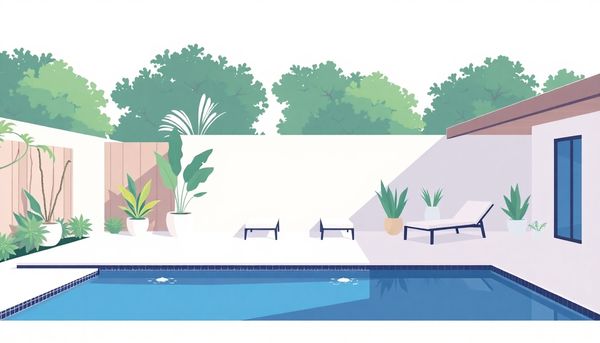
In the midst of summer’s swelter, storing and handling your chlorine tablets correctly can be as crucial as knowing how to use them. Once you’ve invested in these slow-dissolving pucks, safeguarding them ensures they remain effective throughout the pool season. From personal experience, an encounter with improperly stored chlorine tablets can turn a backyard oasis into a chemical hazard.
Begin by selecting a cool, dry spot for storage. If, like many pool owners, you’re tempted to stash them in the garage, beware of fluctuating temperatures and humidity. Excess moisture can cause tablets to crumble, while heat might intensify their chemical odor, creating an unwelcome home environment. A well-ventilated shed or an indoor closet are preferable options.
Pay attention to packaging. Containers should be airtight to prevent exposure to elements that could degrade the tablets. Some brands offer individually wrapped tablets, which add an extra layer of protection against moisture. It’s a small detail, yet significant in preserving their longevity.
Handling also requires care. Always use gloves and avoid inhaling any fumes when opening a container. Direct contact with skin or clothes can lead to irritation or bleaching. Keep these potent pucks out of children’s reach; curious little hands could mistake them for toys or candies.
In essence, a little foresight in storing and handling your chlorine tablets can save you from unnecessary expense and ensure your pool stays crystal clear all summer long.
Selecting the right chlorine tablet size for your pool can feel like choosing the perfect puzzle piece. Each size plays a specific role in the grand design of pool maintenance. For large pools, typically those holding more than 5,000 gallons, the 3-inch tablets are the workhorses. They provide a slow and steady release of chlorine, ideal for maintaining consistent sanitation levels over an extended period. Imagine it as a slow cooker method—set it and forget it, with peace of mind your water remains pristine.
Smaller pools, such as those charming above-ground setups or compact in-ground varieties holding less than 5,000 gallons, benefit from the nimbleness of 1-inch tablets. Their quicker dissolving nature suits these environments, ensuring no accidental overdose of chlorine that can occur with their larger counterparts. Smaller pucks offer more precise control, preventing that overwhelming chlorination that can irritate skin and eyes or damage pool surfaces.
Using the appropriate size also means extending the life of your pool equipment. Over-chlorination, particularly in smaller pools, can wreak havoc on filtration systems and liners. It’s crucial to match your chlorination strategy with your pool’s specifications. Regular testing and adjustments are necessary to keep everything in harmony. Balancing the puzzle of pool care ensures your chlorine tablets do their job efficiently without any unwanted side effects.
Storing chlorine tablets properly is akin to safeguarding a precious asset—one that keeps your pool crystal clear and welcoming. These powerful pucks might seem unassuming, but storing them improperly can diminish their effectiveness or even pose safety risks. First and foremost, ensure that the tablets remain in a cool, dry place. Excessive heat or moisture can cause them to degrade prematurely or clump together, making them less potent when you need them most.
A pool shed or a dedicated storage container can serve as an ideal spot, provided it's well-ventilated and away from direct sunlight. It's also crucial to keep these tablets in their original, tightly-sealed container. This not only helps maintain their longevity but also prevents accidental exposure to children or pets. I once made the mistake of leaving mine in a slightly damp garage corner, and they ended up sticking together like a brick of calcium—lesson learned.
For those with limited storage options, consider using a plastic storage bin with a lid. This extra layer of protection can shield the tablets from unforeseen leaks or spills. Remember, while tablets are designed to be hands-free in your pool, they still require a bit of attention when it comes to storage. Proper storage ensures that when the summer heat hits, your pool remains a refreshing refuge.
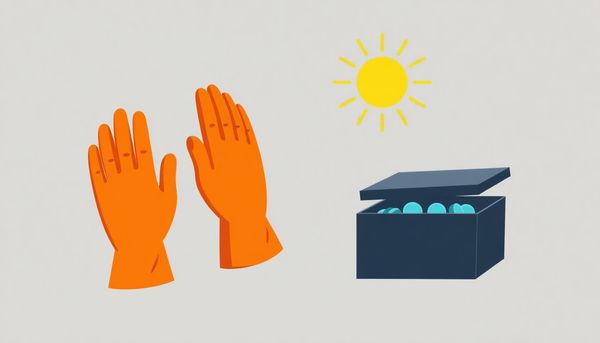
This article provided insights into maintaining your pool. Start your pool care journey today!
Want to become a pool maintenance expert? Our free Pool School course covers everything you need to know about pool care. From basic maintenance to advanced troubleshooting, you'll learn how to:
Join over 10,000 pool owners who have already transformed their pool care routine. Get started with our free Pool School course today!